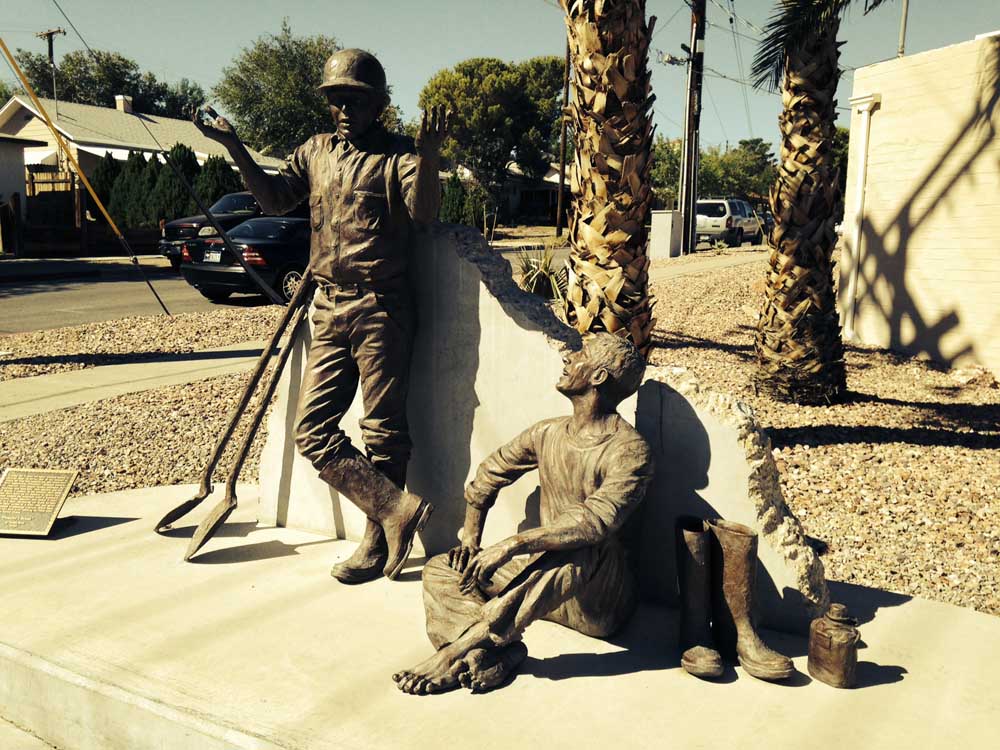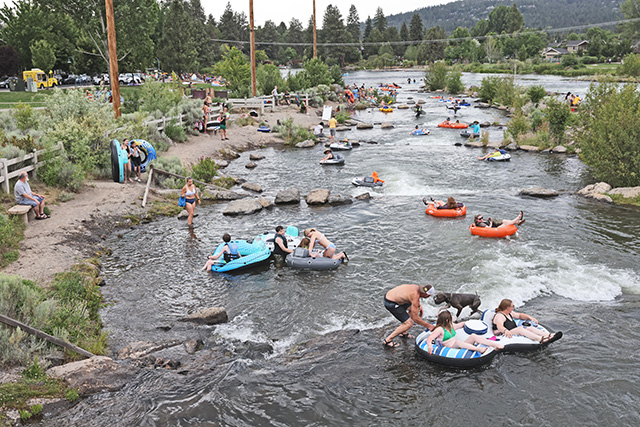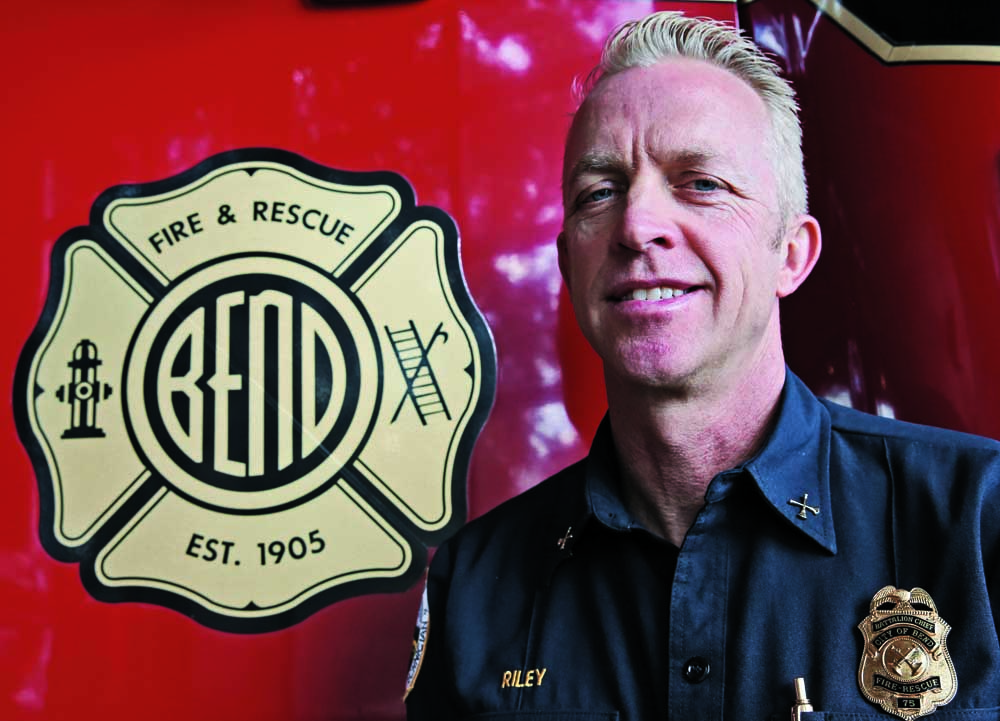There’s public art aplenty in Boulder City
Published 12:00 am Sunday, December 21, 2014

- Photos by Sam McManis / Sacramento Bee / Tribune News Service“Rag Town Goddess,” by Sandra Messina, is one of the 36 sculptures in the public art space of Boulder City, Nevada.
BOULDER CITY, Nev. —Your savvy, but ultimately foolhardy, tourist on his way to Hoover Dam will take a sharp left on the U.S. Highway 93 bypass and avoid this city’s “historic” downtown altogether.
Yet what the traveler saves in time and gas mileage, always important in these frugal times, he will lose in the immeasurable realm of the sublime. He will miss a lovely Art Deco-drenched, Depression-era town forged by the New Deal, a town that takes aesthetics so seriously in its urban core that it could be mistaken for an art museum.
Thirty-six officially recognized pieces of public art, most sculptures but also a few murals, line Boulder City’s two main thoroughfares, Nevada Way and Arizona Street. Hewn over the years by human toil, just like Hoover Dam, but on a less grand, more personal scale, these pieces range from wrought iron and bronze historic representations from the dam’s construction to whimsical pieces celebrating daily life in this cozy burg of 15,023.
In a way, it’s best to approach Boulder City unaware of its artistic bent, as I did. You get a nice jolt of amusement as you reach the intersection of Nevada Way and Wyoming Street.
There, standing proudly with the late-afternoon sun glinting off its surface, is a larger-than statue not of President Franklin D. Roosevelt nor Hoover Dam architect Gordon Kaufmann, but of a lowly worker named “Alabam.” He is wearing a fedora and overalls, has a bandolier of toilet-paper rolls draped across his chest and has slung a straw broom with a few more rolls of toilet paper on the handle. Depending on your interpretation, his facial expression is either a tight-lipped smile or a muted grimace for the job to which he’s been assigned.
Yes, the first work of art in town, a bronze and copper work by local sculptor Steven Liguori, commemorates a man who cleans the scores of outhouses at the dam construction site, an essential if, er, crappy, job. A plaque honors those who held such thankless jobs at the dam: “There were muckers who shoveled mud out of the tunnels, truck drivers who hauled rock up and down the river or, like the man you see here, those who swept the outhouses and kept them well supplied with paper.”
Fortunately, “Alabam” does not set the tone for the 35 other pieces that line the streets. You can’t dismiss the collection as mere kitsch. Some pieces, granted, are equally as whimsical, but others take a more serious approach to the town’s Depression-era roots and still others celebrate the quotidian charms of small-town life: children at play, dogs straining to fetch a ball, a couple in their Sunday best embracing, a biker astride his chopper, two construction workers kicking back with their lunch pails.
Too often these days, cities erect public art only as an afterthought, or as a contract demand to developers who carve out housing tracts and strip malls. It’s refreshingly rare to see a city fork over the original investment. Then, when those funds dwindled, it reached out to its artists and formed an agency, the Boulder City Public Art Scape, to “create a more visually pleasing environment” by inviting sculptors and muralists to donate (sometimes permanently, sometimes just for a season) works they feel define the town.
So numerous are the works that some visitors are a little taken aback. As they exited the popular Boulder Dam Brewing Co. and headed across Nevada Way to where their motorcycles were parked, Dave Couture turned to friend Natalie Ault.
“Look, it’s sticking its head out of the pipe — cool!” Couture said, as Ault smiled and reached for her phone to take a picture of a bizarre piece featuring a human head peeking out from a curved 6-foot above-ground water main pipe.
“We come out here every now and then to have a beer and get out of Vegas, and you can’t help but notice (the art),” Couture said. “You ought to come when they have their (monthly) Art in the Park. It’s a huge festival. They get even more art on display. It makes you want to stop here.”
Boulder City has been a tourist stop since the towering temple of hydroelectric power opened in the mid-1930s. The town has its share of T-shirt and trinket shops, but also quirky nonchain restaurants, antiques stores and boutiques (the buzz phrase here is “Artistic Upcycling”). It’s always had an artistic bent, but nothing really organized until the formation of the nonprofit Art Scape in 2006.
That’s when the sculptures, four to a block in some stretches, began in earnest. The city provides a detailed map, but really it is better just to park your car and hoof it up and down the Old Town streets. (Boulder City was built in a trianglelike grid, so even the farthest-flung works are within walking distance of the historic Art Deco theater, hotel and city hall.)
Once you’re done gaping at the cheekiness of the noble latrine cleaner, look on the other corner and gaze upon one of the newest pieces, Las Vegas artist’s Sandra Messina’s “A Gift From the Gods,” purchased by Art Scape and donated to the city. It’s an 8-foot bronze rendering of an eagle feather, painted a stark black and white and so ethereal you think it might float away on the next breeze. Another block down, Messina’s tandem piece, “The Relationship,” features two bronze eagles.
Hoover Dam’s history is given its due beyond “Alabam.”
Roy Butler’s “Afternoon Breeze,” showing a woman with hand to hat, is a nod to the wives of construction workers who helped civilize the town. A plaque reads: “the women had to improvise, shaping the temporary camp into an enduring community. They planted vines and fashioned rugs out of scraps, transforming slapdash houses into pleasant cottages.” Sutton Betti’s “Puddler’s Break” shows two construction workers, “Puddlers,” in repose. These were the guys who poured the cement and smoothed it with shovels, making sure “debris,” such as fellow workers, didn’t get submerged.
Boulder City residents mostly nod and give a lukewarm, “It’s nice” appraisal of all the artwork. It takes an outsider, perhaps, or maybe a native son returned home after years away, to fully appreciate it.
Kelly Bergeron, 44, grew up in Boulder City, left after high school, settled in Tuscaloosa, Alabama, and never looked back. When he returned for the first time last month for a visit, he was shocked.
“My first thought is, ‘That’s odd,’ and then ‘Wow, it’s cool,’” he said. “I don’t remember too many sculptures here when I was a kid. It’s kind of surreal. The place looks so much nicer. It makes me wonder whether I should have ever left.”
He directed me to leave the immediate Old Town and go a half-mile to a house on Navajo Drive (“Can’t miss it; it’s shaped like a geodesic dome”). That block is a typical suburban tract, except for the bright white, well, igloo on the corner. In front are four bronze statues, including a large piece showing three children huddled around an open book, that the home owner. Milton Layne, purchased from the same artists whose work adorns public spaces.
“Why’d I buy them?” said Layne, 87. “I just liked them. I’d like to see everybody here have a statue in their yard.”
At this rate, Boulder City just might get there.







